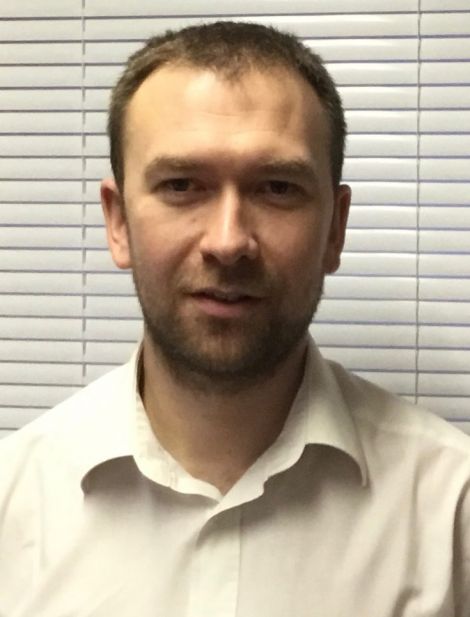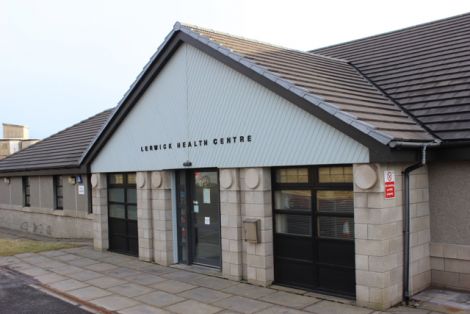News / Lerwick Health Centre eases waiting times
LERWICK Health Centre has managed to bring the waiting time for an appointment down “significantly” and practice staff are confident they will be able to fully meet demand if they can fill two long-standing GP vacancies.
Practice manager Adam Czarnobay and Dr Dylan Murphy both attended Lerwick Community Council on Monday night to give a detailed presentation on how NHS Shetland is striving to tackle demand.
The health centre has been overstretched for several years owing to a combination of factors including staff shortages and a growing and ageing population.
Czarnobay, who took up his post in November 2016, said that this time last year the practice was offering around 160 weekly appointments – far short of the demand of around 300. That has risen by over 50 per cent to 250.
There is now one full-time, five part-time and one “fellow” GP, along with one fully trained advanced nurse practitioner (ANP) and five trainee ANPs. ANPs were first introduced in March 2015.
“We’re still not quite meeting the demand but we’re heading in the right direction,” he said. “We have a lot more clinicians than we had 12 months ago.
“If we were to fill the two full time GP positions that would put an extra 128 appointments per week into the system, which would enable us to meet demand.”
A year ago the average wait time for an on-the-date appointment was four days, and Czarnobay said that was now down to around 1.5 days.
Both said the qualified nurses played a crucial role in primary care and that role is likely to increase in the next decade or so. But they stressed ANPs were very good at knowing their clinical limits and would always consult GPs on any matter that was beyond their expertise.
Community councillor Andy Carter said that, as one of those who previously faced a four-week wait for an appointment, he was “heartened” to hear the delay time was coming down.
Become a member of Shetland News
He said it was unfortunate that the way GP surgeries are organised meant the “burden of lack of GPs can’t be shared across practices”.
Murphy said GPs could be brought in from other surgeries on a locum basis if they had a day off, but the health board was “not in a position to move GPs around in a fluid way” because each practice is its own entity.
“Perhaps it would be better if you could,” he said. “The only way would be to have a complete merger of medical practices. It’s not a completely daft idea – it could be done, the downside would be you’d face arguments about centralisation.”
Czarnobay said Lerwick Health Centre currently has four GP trainees and he is “hopeful at least some of those will want to take up a post” in the islands once their training is completed.
Murphy is hoping to “drum up recruits” to increase the number of training practices in Shetland beyond the existing two in Lerwick. Statistics show that 60 per cent of qualifying GPs take up a post in the area they trained in – meaning it is viewed as potentially the “best hope” to resolve recruitment difficulties.
Carter said he had noticed a private medical provider taking an advert out in a local magazine, and asked Murphy if such operators could be “the thin end of the wedge for the dear old NHS”.
“I bloody well hope not!” he replied. Murphy noted that UK health secretary Jeremy Hunt did write a book 10 years ago saying he favoured privatisation and “you do have to wonder if deliberate underfunding is an underhand attempt” to bring that about.
But GPs “tend not to want to work in private medicine, which is often driven by bad medicine where the patient will shop until they get what they think they need”.
That said, if a private provided “did come up and attempt to set one up, I suspect they would get takers” if demand for private physios and chiropractors in the islands is anything to go by.
With the prospect of hundreds of new houses going up in Lerwick between now and 2030, community councillors also wanted to know how the health centre was placed to handle a further increase in the town’s population.
Murphy said that with GP contracts “largely workload-based”, government funding should increase as the population goes up. If a further 6-700 patients were added then that should roughly equate to money for half an extra GP.
He pointed out that care homes also presented an issue. While NHS Shetland has saved money by closing the Gilbert Bain Hospital’s Ronas ward, those patients are now in a Montfield care home and that results in GPs being taken away from the health centre.
“That 90 minutes to two hours I’m not doing bookable appointments at the health centre [means] there’s unintended consequences from saving money in one area. It’s enjoyable work but it does take away from that health centre interface,” Murphy said.
Become a member of Shetland News
Shetland News is asking its readers to consider paying for membership to get additional perks:
- Removal of third-party ads;
- Bookmark posts to read later;
- Exclusive curated weekly newsletter;
- Hide membership messages;
- Comments open for discussion.
If you appreciate what we do and feel strongly about impartial local journalism, then please become a member of Shetland News by either making a single payment, or setting up a monthly, quarterly or yearly subscription.






























































